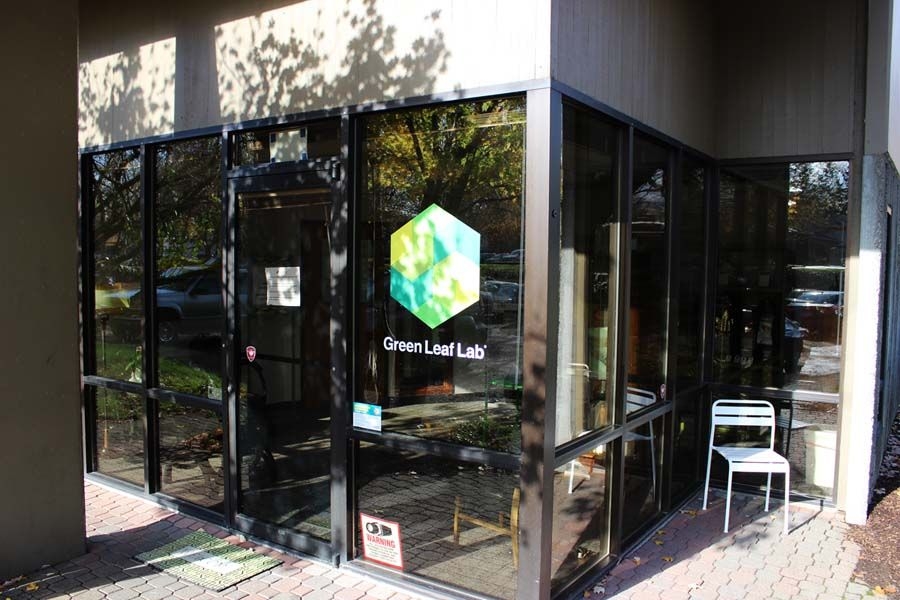Eric Wendt talks about cannabis regulations, financial models and the need to onboard the scientific community.
Earlier this week I posted a photo tour of Green Leaf Lab. Here is Part II: a Q&A with the lab’s chief science officer. Responses have been edited.
OB: How did new testing regulations impact the marketplace?
EW: It’s been an adjustment period for the producers and manufacturers. They’re designed to have greater control over the product reaching the consumer. We are seeing products hitting the market now are significantly more consistent and have less variability in terms of potency from product  to product.
to product.
What challenges did you face preparing the lab for Oct. 1 [when the regulations went into effect]?
[We] had to get all instruments and staff hired about eight months prior to getting ready. For those eight months we weren’t testing to the new rules, so we were not charging customers appropriate testing fees.
So [we were] basically losing money for eight months and paying expensive scientists to use expensive instrumentation to figure out these methods of analysis that didn’t exist before. Without support of the greater scientific industry, at least until very recently, there are no protocols; there are no standards to use. In every other industry … there’s EPA methods you have to follow.
It turns out cannabis is the most challenging matrix I’ve ever seen. Between the cannabinoids, the terpenes, the plant material, all the different components make it very difficult to see trace level amounts of pesticide — that in conjunction that nobody’s done this before it took us a good 6 months of just R&D to figure it out. It’s one of the reasons only four labs in the state got accreditation for pesticides.
How have changing state regulations impacted revenues?
On Sept. 30, the OLCC said we’re reducing the pesticide-testing requirement for flower by two-thirds. The day before the rules took effect. We had set budgets for a year and half of what we were expecting to have sample wise and hired people, and all of a sudden they changed our revenue by two-thrids — negatively. So that was a shock and a challenge.
The OLCC didn’t want to be responsible for the collapse of an industry, understandable I suppose. There’s a provision in place if the labs are not operating at capacity and are on top of it — we check in every two weeks with the state — they might change it back to the original rules at some point.
What results are you getting from pesticide tests?
There wasn’t a lot of data ahead of time how many product have pesticides. We see a lot of great clean product come through; we also see a lot with 10, 20, 100 times the state limit. So you’re either doing great or you failed miserably. Not a lot in the just barely failing area.
RELATED STORY: BEHIND THE SCENES AT A CANNABIS TESTING LAB
How has the accreditation process moved the industry forward?
One of the reasons the state chose to go though accreditation process is because one of the things holding the industry back is the inconsistency in analysis from potency as well as pesticides. With no regulatory body overseeing the lab, there was no benchmark for everybody. So anyone with a garage and a printer could set up shop and undercut process. As a whole, that really held the industry back because we couldn’t invest in the equipment or the personnel to move the lab on testing for things forward. We couldn’t generate any revenue competing against anyone not doing a proper analysis.
Do you have plans to expand Green Leaf Lab?
Traditional financial institutions still don’t deal with cannabis businesses. Almost every other lab in town had to seek private funding in order to meet the new requirements for testing. Just to do pesticides is $1 million. So to position yourself to expand after just having extend yourself significantly is a challenge. We have no plans to expand. Until we get to a point where we’re turning customers away, then maybe we’ll have that discussion.
How would you describe the relationship between cannabis and the scientific community?
Wendt says the cannabis industry has yet to attract broad scientific support. Green Leaf, he says, operates without manufacturers for testing instruments and suppliers for chemicals necessary to the process.
“Since we are a new industry, there are not established rules or testing protocols that are common across states,” he says. “So it is difficult to get suppliers to produce the things we need to test the cannabis products.”
“We need the support of the bigger scientific community.”




